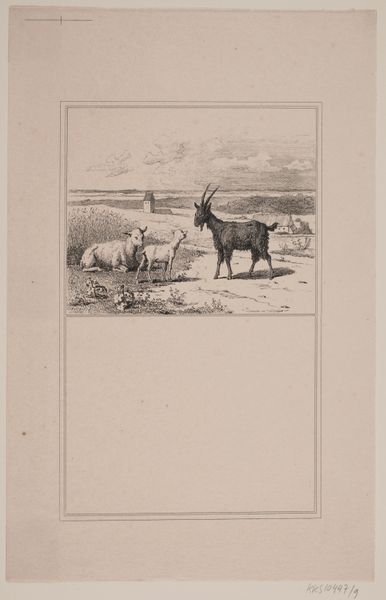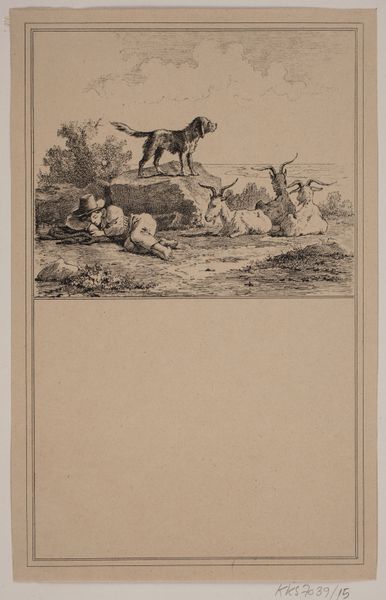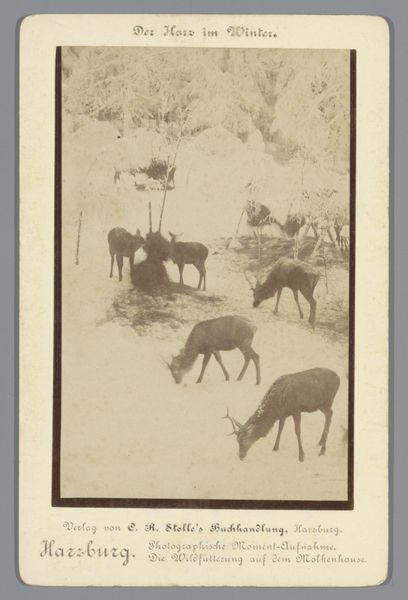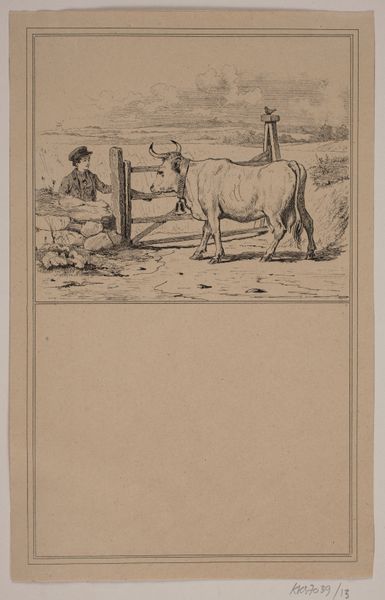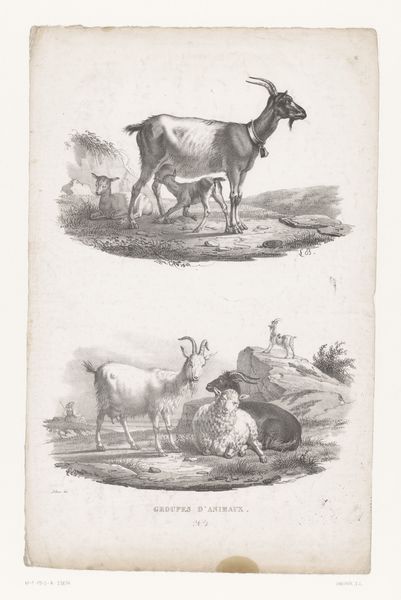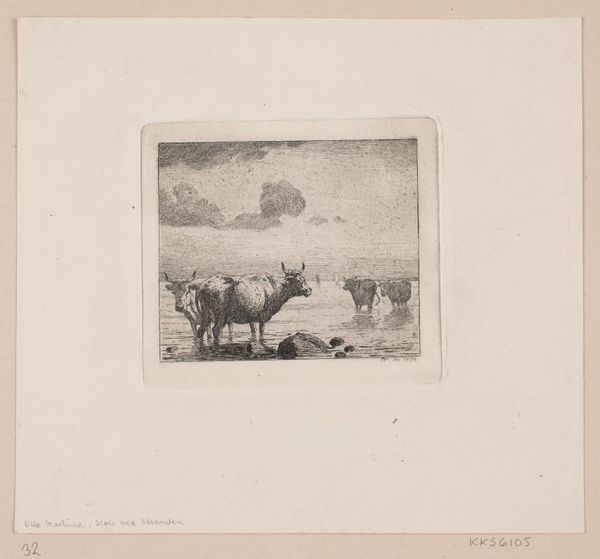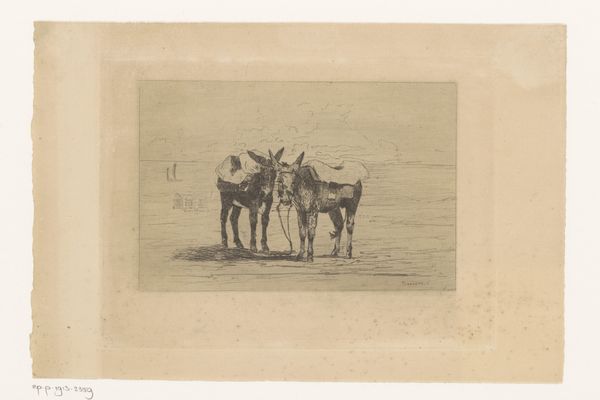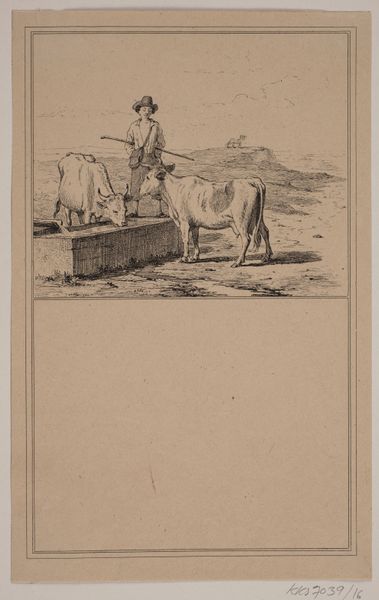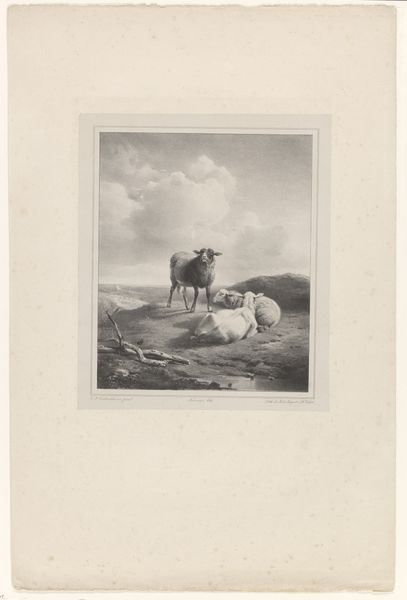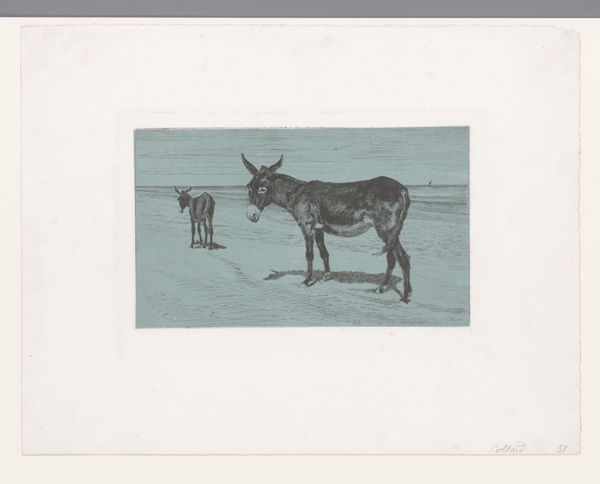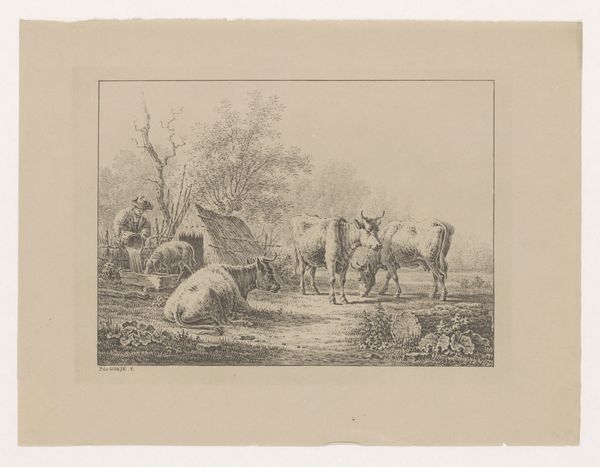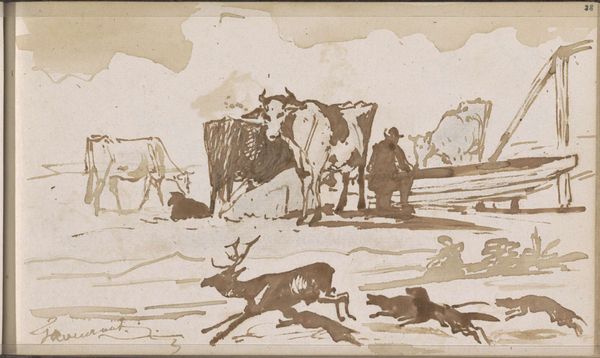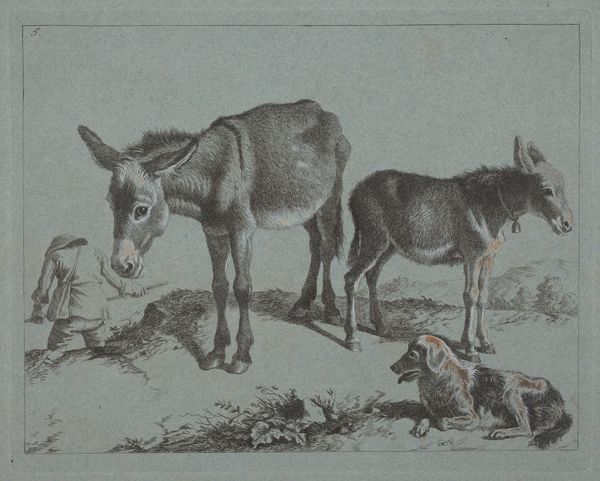
Lammet og bukken. Nr. 10 i Chr. Winther og M. Rørbye, "25 Billeder for små børn" 1846
0:00
0:00
lithograph, print
#
lithograph
# print
#
landscape
#
figuration
#
romanticism
#
genre-painting
Dimensions: 205 mm (height) x 130 mm (width) (brutto)
Adolph Kittendorff created this piece, "The Lamb and the Goat," as an illustration, and what stands out are the figures of these animals, laden with symbolism stretching back millennia. The lamb, traditionally, is an emblem of innocence and sacrifice, deeply rooted in religious iconography. Think of the "Agnus Dei," the Lamb of God in Christian art, a symbol of Christ's sacrificial purity. Meanwhile, the goat, particularly one with prominent horns like this, has often been associated with virility, but also with darker, more primal forces, sometimes even demonic ones. Consider how these symbols have journeyed through time, shifting and layering with new meanings. The lamb, once a simple pastoral image, became a potent religious symbol. The goat, too, has seen its image transformed, from a symbol of fertility to a figure of temptation and chaos. These transformations reveal how collective memory and cultural anxieties shape and reshape our understanding of these enduring symbols. The emotional weight carried by these images continues to engage us, tapping into deep-seated cultural and psychological associations.
Comments
No comments
Be the first to comment and join the conversation on the ultimate creative platform.
